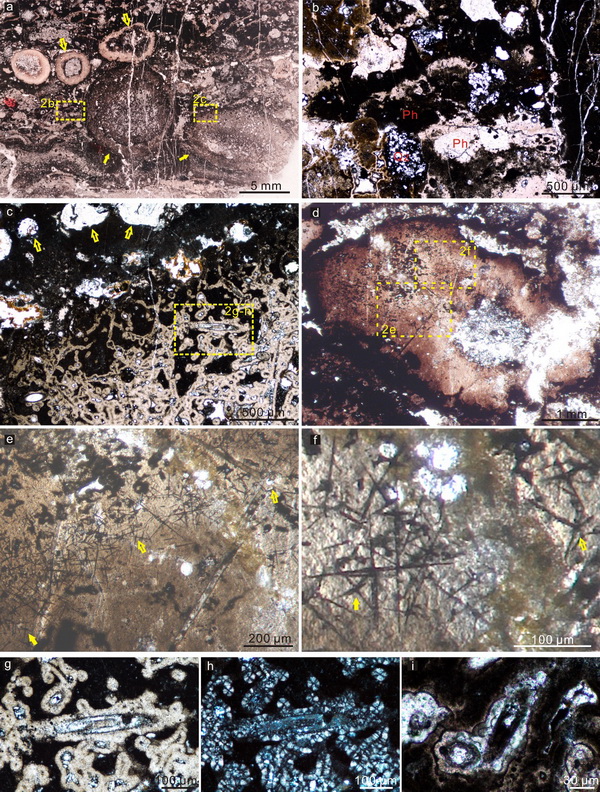Our understanding of the early evolutionary history of sponges is largely impeded by the scarcity of early sponge fossil record, In spite of the purported sponge fossil from the Ediacaran Weng’an Biota, the earliest sponge spicules were found in the Protohertzina anabarica zone of about 535 Ma old. However, the taxonomically informative sponge fossils, which should preserve articulated skeletal frames, were only known from the shale Lagerstatten started from the terminal Cambrian Stage 2. Examples include the black shale of the Niutitang and Hetang Formations, the Chengjiang Biota, the Sirius Passet Biota, the Kaili Biota, the Burgess Shale, etc..
A recent study of Dr. LUO Cui from the Nanjing Institute of Geology and Palaeontology, Chinese Academy of Sciences and Prof. Dr. Joachim REITNER from the University of Goettingen, published online on Feb 28, 2019 in PalZ, revealed in situ, three-dimensionally preserved sponge fossils from the Terreneuvian phosphorites from Hunan, China.
These phosphorites underlying the Ni-Mo layer of the Niutitang Formation is inferred to be no younger than the Cambrian Age 2 based on the previous radiometric dating and biostratigraphic studies of correlative strata. In situ preserved sponge fossils are distributed as nodular bodies in the authigenic carbonaceous cherty phosphorites which exhibit laminated and clotted cryptocrystalline fabrics. Some of the fossils are completely embedded in the honey-colored cryptocrystalline phosphates, while most of them are preserved in the way that the spicules are immediately encrusted by isopachous cryptocrystalline phosphate, with the remaining interspace filled by later phosphate or siliceous cements, and/or pyrobitumen.
The morphology of two fossils was described as examples:
One of them, preserved in the former state mentioned above, is thick-walled, consisting of similar triaxons of three different size hierarchies. The small spicules in the 2nd and 3rd hierarchies are randomly distributed. The other one, preserved in the latter state mentioned above, was investigated using grinding tomography to reconstruct its 3D architecture in a 6mm×5mm×1mm space. This fossil is mainly composed of pentactins, few hexactins, diactins, and other forms. Some pentactins are distributed with the paratangential rays more or less parallel to the surface of the nodular body, a way similar to hypodermalia.
Other spicules are generally irregularly arranged, but sometimes also exhibit a perpendicular arrangement with respect to contacting spicules and to other spicules in the 3D space. These morphological types were previously unknown from the lower-middle Cambrian shale Lagerstatten, although they appear to be in accordance with the hexactinellid stem groups hypothesized by some researchers (e.g. Mehl, 1996; Dohrmann et al., 2008).
In addition, various forms of disarticulated sponge spicules were also observed in these lower Cambrian phosphorites, some of which showing demosponge-specific features or combined features of hexactinellids and demosponges, indicating still unexplored sponge biodiversity in this particular age and taphonomic window.
This study was financially supported by the National Natural Science Foundation of China, the Chinese Academy of Sciences, the CAS Key Laboratory of Economic Stratigraphy and Palaeogeography (NIGPAS), and the German Excellence Initiative (Goettingen Courant Center).
 Petrology of the nodular phosphorites and the preservation of sponge fossils.
Petrology of the nodular phosphorites and the preservation of sponge fossils. Projection of the 3D architecture of the spicules in a nodular body in a 2D surface.
Projection of the 3D architecture of the spicules in a nodular body in a 2D surface.